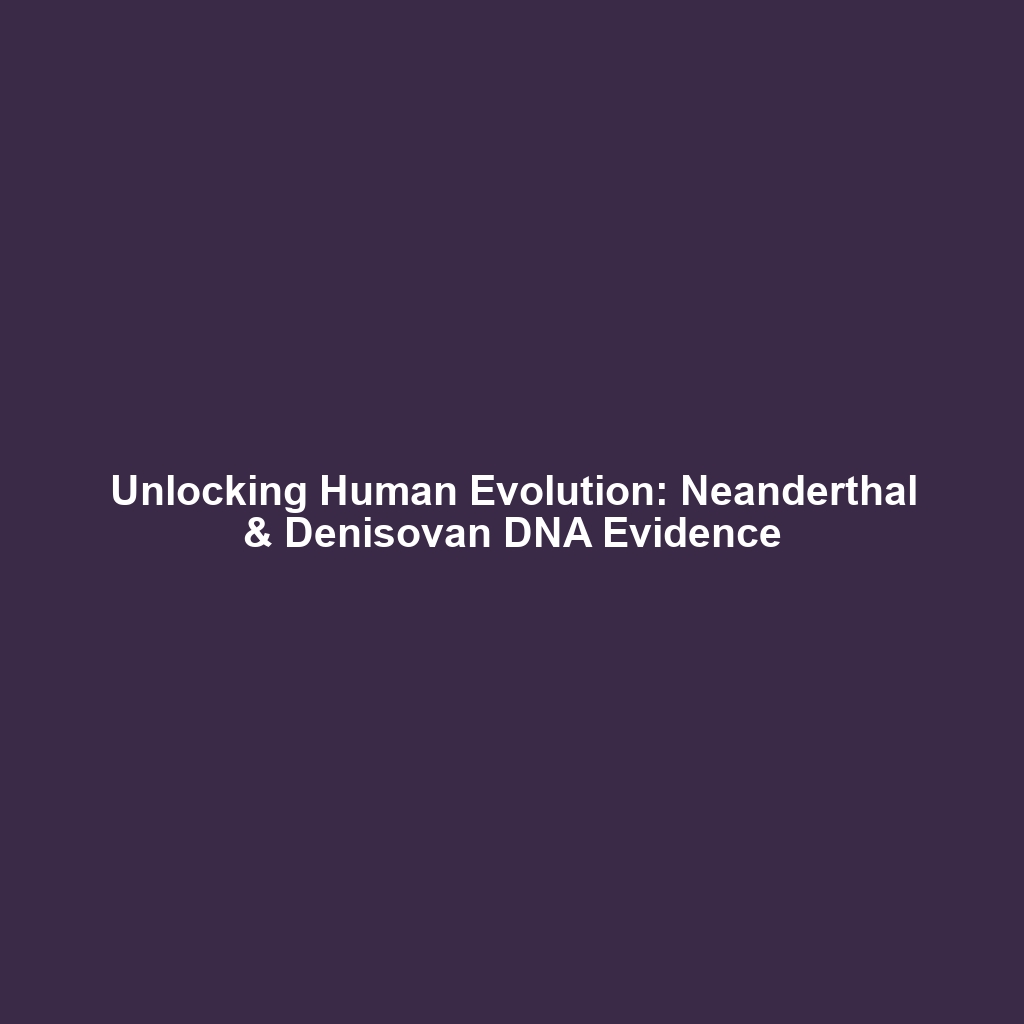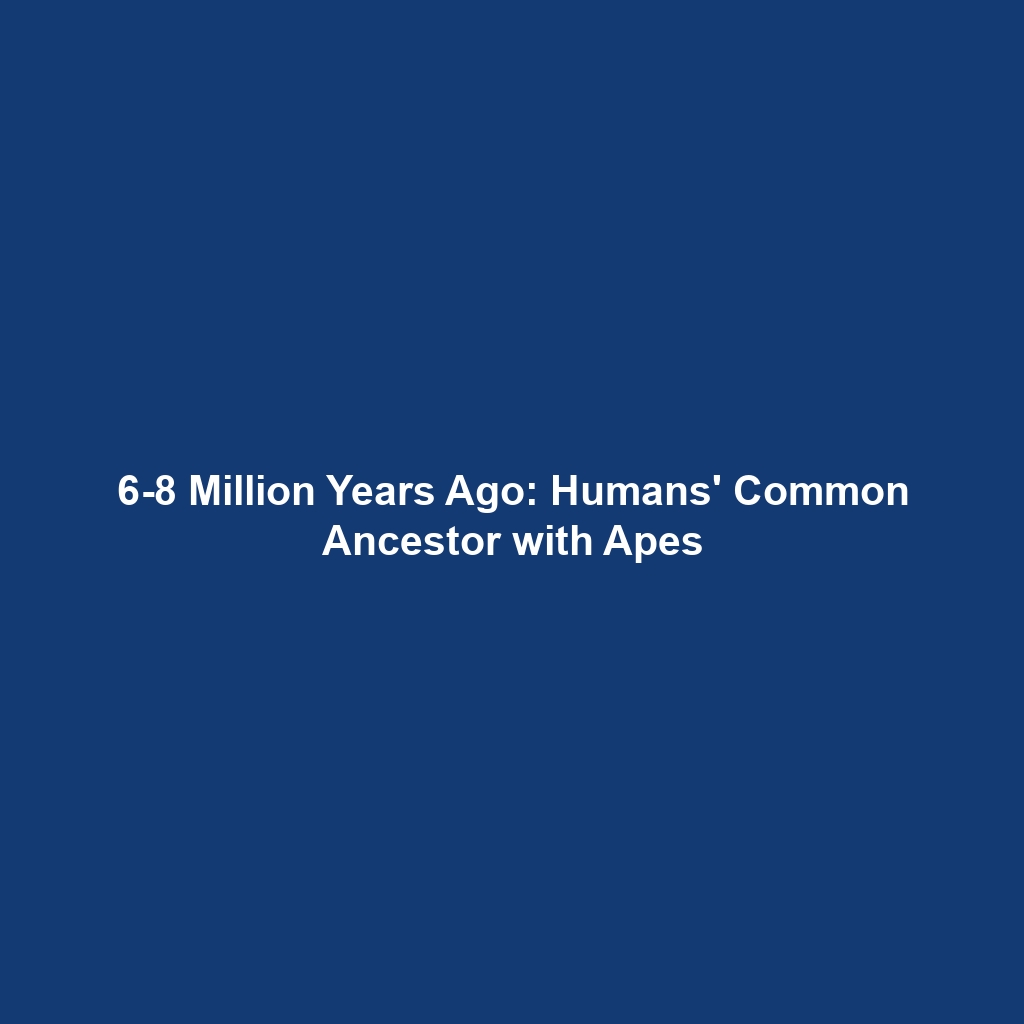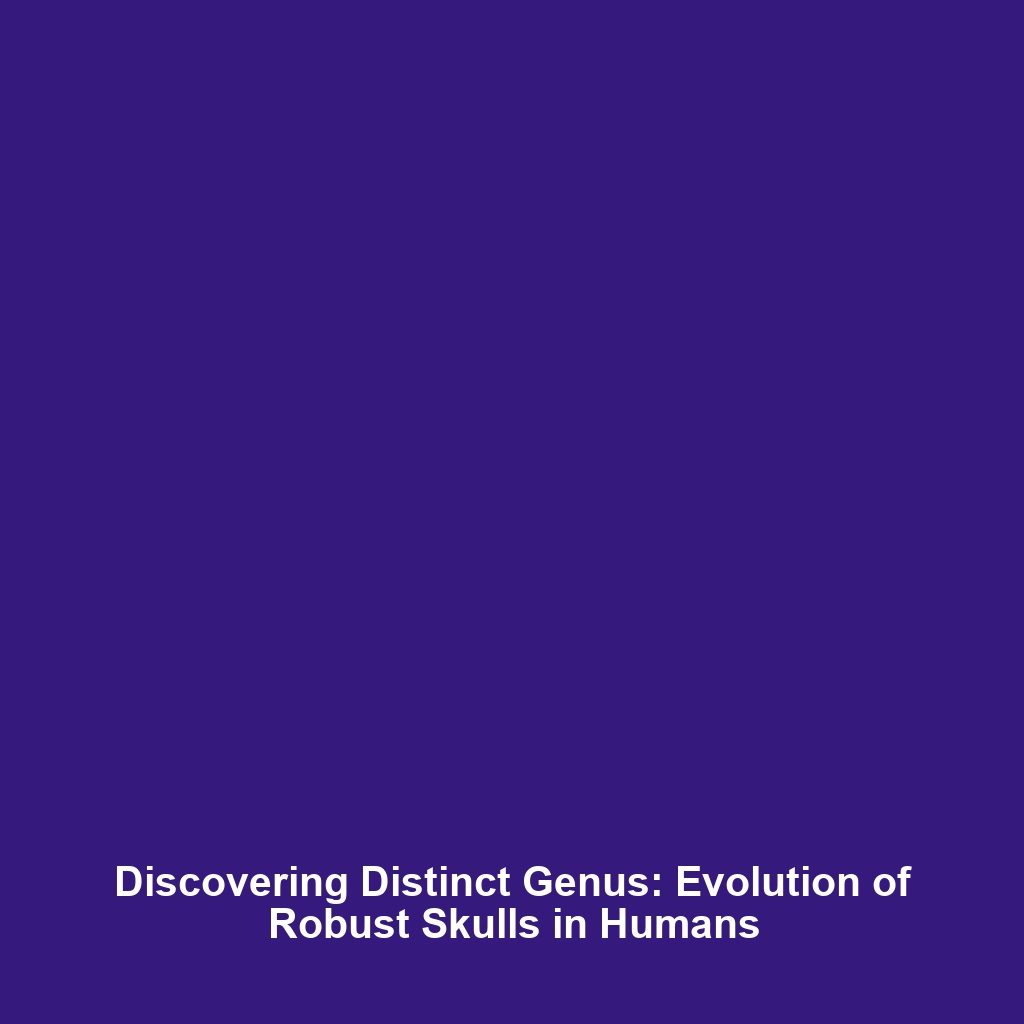Evidence of Interbreeding in Human Evolution
Introduction
The study of human evolution has garnered significant interest, particularly regarding the evidence of interbreeding among early human species. DNA analyses have shown that non-African populations carry small amounts of Neanderthal DNA, while specific populations in Southeast Asia possess traces of Denisovan DNA. This interbreeding has profound implications on our understanding of human ancestry and diversity, allowing scientists to construct a clearer picture of how ancient humans migrated and interacted. Such findings highlight the complexity of human evolution and challenge previously held notions about our ancestral lineage.
Key Concepts
Neanderthal and Denisovan Contributions
Research has revealed that Neanderthals and Denisovans contributed genetically to modern human populations. Key concepts include:
- Neanderthal DNA: Found predominantly in non-African populations, this DNA is a remnant of interbreeding from around 60,000 years ago.
- Denisovan DNA: Unique to some Southeast Asian and Oceanian groups, indicating a separate yet significant interbreeding event.
These genetic contributions are not just remnants; they are linked to various traits and diseases, emphasizing the importance of understanding evidence of interbreeding within the framework of human evolution.
Applications and Real-World Uses
The study of evidence of interbreeding has diverse applications in fields such as:
- Medical Genetics: Understanding genetic disorders and susceptibilities that trace back to Neanderthal and Denisovan DNA.
- Archaeogenetics: Enhancing archaeological approaches by applying genetic data to understand ancient human migrations.
These applications demonstrate how evidence of interbreeding contributes to insights within the realm of human evolution.
Current Challenges
Despite advances in genetic research, there are notable challenges in studying and applying evidence of interbreeding:
- Identifying the specific traits attributed to Neanderthal and Denisovan ancestry.
- Disentangling modern human DNA from ancient DNA in archaeological remains.
- Ethical considerations surrounding the implications of genetic research in current populations.
These issues highlight the challenges of studying interbreeding and its impact on our understanding of human evolution.
Future Research and Innovations
Future research in evidence of interbreeding is poised to leverage next-gen sequencing technologies, which may allow for deeper insights into ancient human genetics. Potential breakthroughs include:
- Enhanced techniques for extracting DNA from fossils.
- Exploration of the functional implications of Neanderthal and Denisovan genes in modern human populations.
- Developments in bioinformatics to better model ancient human interactions.
This research is essential in shaping the future of human evolution studies, providing a more nuanced understanding of our species.
Conclusion
In conclusion, the evidence of interbreeding seen through DNA studies offers crucial insights into the complexity of human evolution. The presence of Neanderthal and Denisovan DNA in contemporary populations emphasizes the intricate web of human ancestry. Continued research in this arena not only furthers our understanding of who we are but also has practical applications in genetics and archaeology. For more insights on human evolution, explore our articles on human migration patterns and ancient DNA studies.









